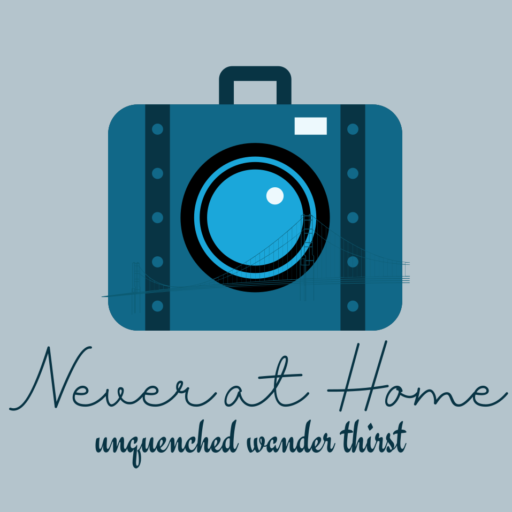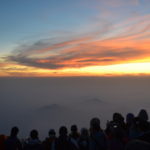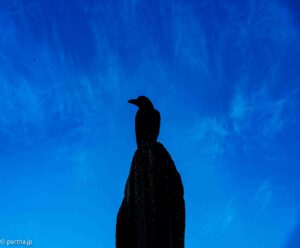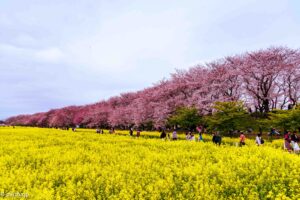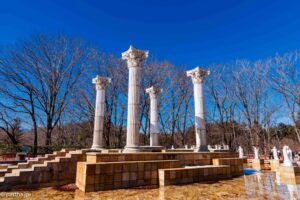
Chichibu is forests, mountains, valleys and rivers with unspoilt beauty located within two hours of Tokyo. The town and the surrounding countryside with scattered villages offers a distraction from the bustle of Tokyo.
We visited Nagatoro in late spring last year, just in time to catch the last of the cherry blossoms. We chose the village of Tamura this time around, an Airbnb in the village the reason for our choice.
Searching the place of map showed a rural hamlet within a short drive from the Chichibu city, distant enough to offer a different experience, but closes enough to the city to provide access to conveniences.
The drive from Tokyo was smooth, the early afternoon hour of our departure avoiding the weekend traffic. We joined the Kanto Expressway 関東自動車通 and exited at the Hanazono interchange and continued along the National Highway 299 for around 20 kilometres. The Airbnb was a log house along the highway, located on the right.
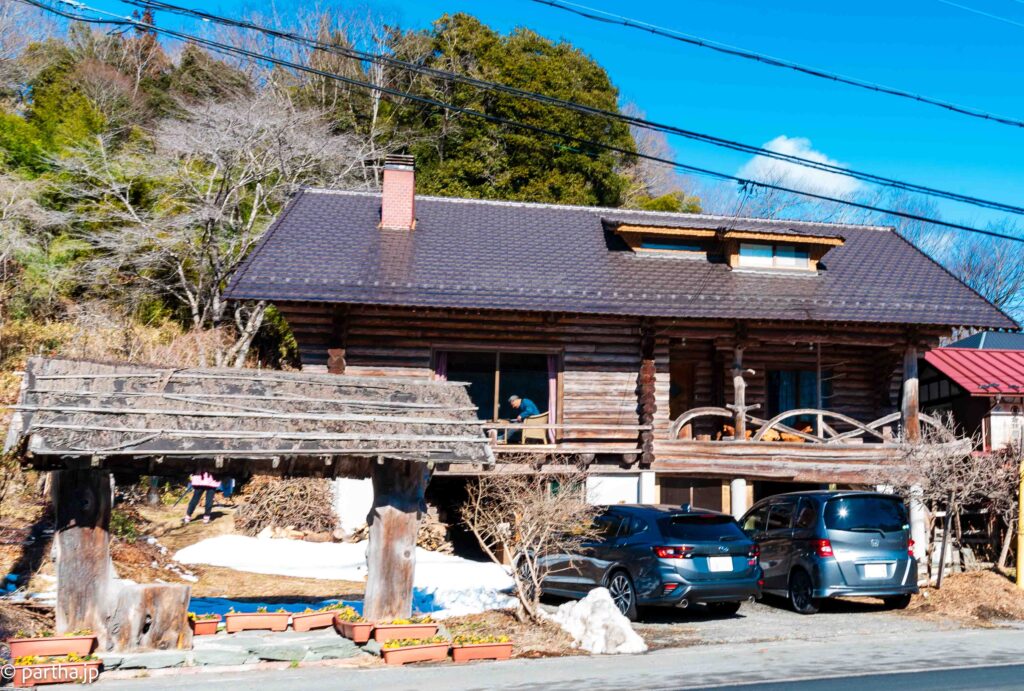
Our luggage deposited we set out for Chichibu city to watch the night illumination that was being advertised as a tourist attraction. Our hosts helpfully pointed out the car parking near the Chichibu Station.
The attraction advertised as Irodori Sanpo 彩り散歩 starts from the Chichibu Shrine 秩父神社 and is seen along the 馬場どり Banba Street. There are light projections installed along the street and they cast colourful patterns. The nearby Myoken no Mori Park 妙見の森公園 is also illumination with colourful lamps and serves as a colourful picture spot.
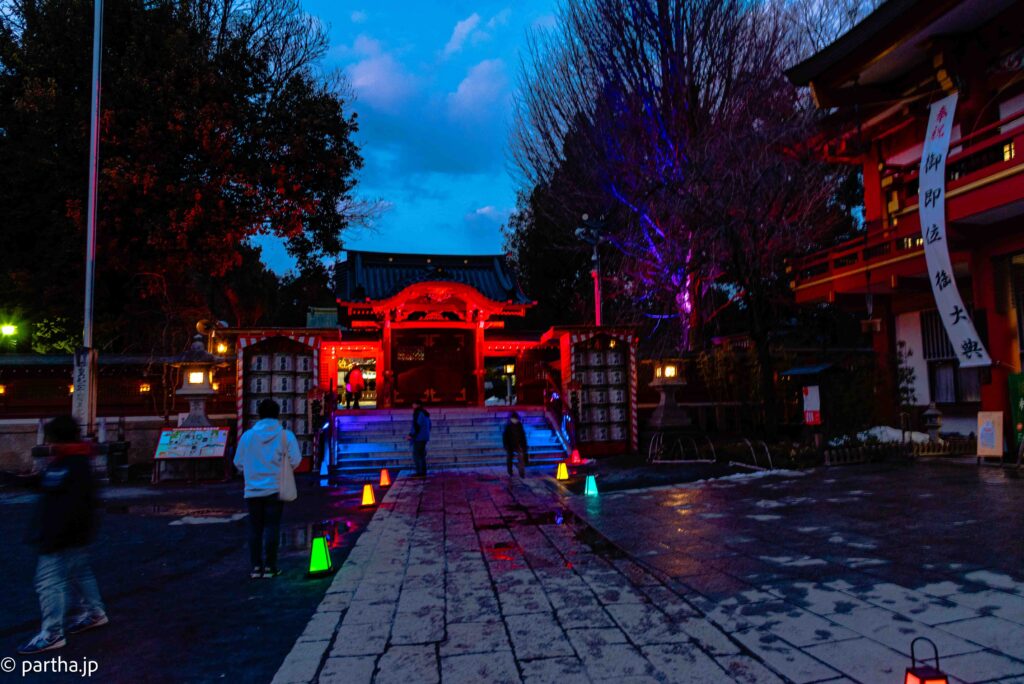
The streets were pretty through the expectations from the pamphlets were much higher. Cars passed by regularly making photography difficult.
Some of the restaurants were closed, opening later in the event when the dark would illuminate the lights even further.
It became colder as night settled in and we went back to our Airbnb. The log cabin which served as our accommodation was on the National Route 299, there was moderate traffic as we drove along the sparsely populated area, farmhouses dotting the route. As we stopped to turn into the cabin driveway located on the right, the oncoming car flashed lights asking us to turn.
The family running the Airbnb also stayed on the top floor of the cabin, it was difficult to call it the third floor, it was closer to an attic. The middle aged couple had a college going son, who came in for the night from Tokyo for the long weekend.
The wife was Taiwanese, living in Japan for close to 2 decades. The husband explained that he was born and bought up in this area, his parents occupied the house next door.
‘After they died it’s turned into an Akibeya’ he said wistfully, using the term for abandoned houses dotting Japan, a reflection not only of an ageing and dwindling population but of a newer generation migrating into the big cities.
The ‘Chichibu Muse Park’ named after the statues of the Greek Muses, the nine Greco-Roman Goddesses of various arts. The park was a 10 minute drive from our location, but it was a clear sunny day and we chose to hike up to the park.
The hour long hike passes through strawberry fields, a few of them selling the Saitama special variety the Amarin あまりん on vending machines located along the road. However the strawberry farms near our location were out of stock, the strawberries either already sold or too young to pluck.
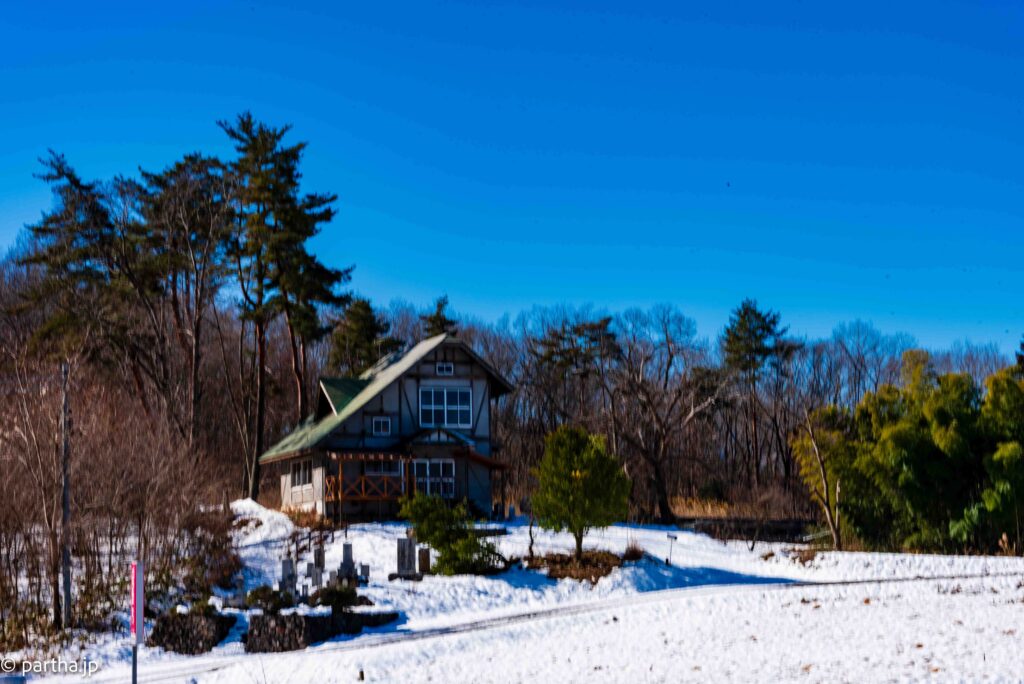
The final kilometres in the 3 kilometres hike had snow piled up on the path and we laboured our way up the mountain in the ankle deep snow. The Muse park is spread over 375 hectares and the statues of the Goddesses is one the 3 themes that the park is built around. Other than culture, there are sports and music areas in the park. The open air stage is mean for warmer months, winters in Chichibu are cold, there is a music hall and sports training facilities spread around the park.
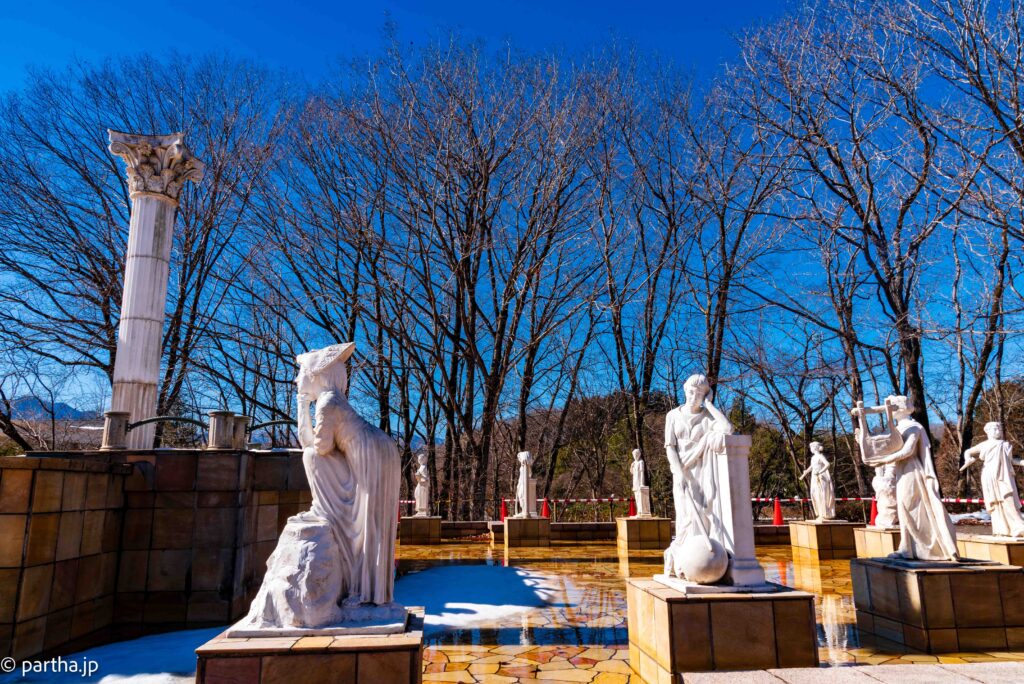
A group of school children wee hard at training, the coach of the sports teacher making them run across the park. Families walked along with dogs or children or occasionally both.
Children shouted , screamed and banged on the metallic structures, loud but soothing sounds. There are stunning views of the nearby snow capped mountains.
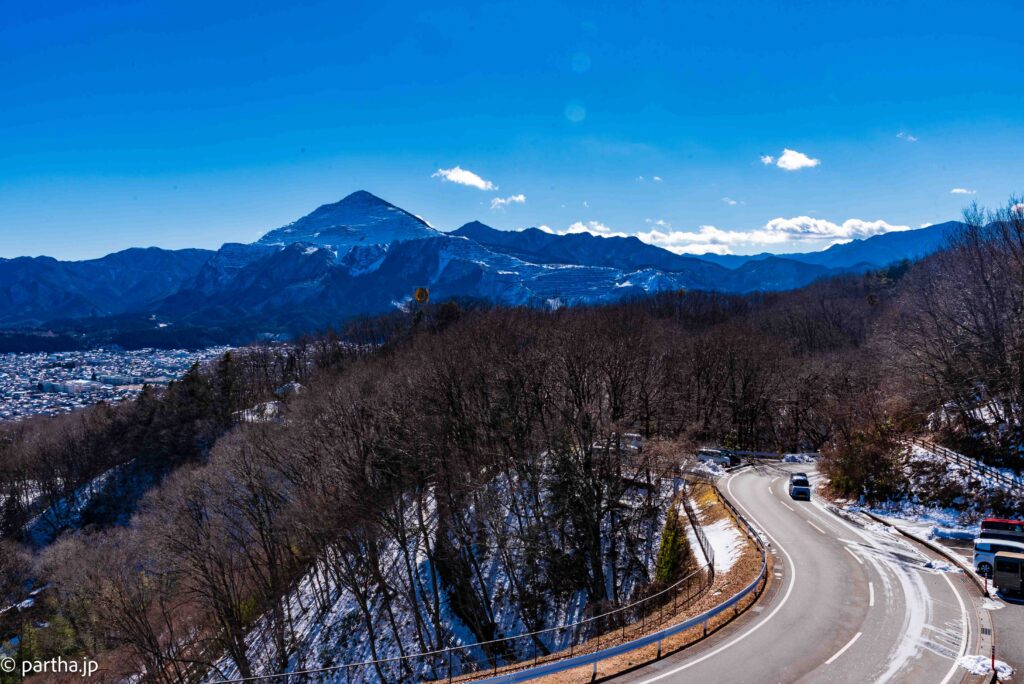
There are around 9 car parks spread around so the park is easily accessible by car. We were the lone walkers, most other visitors coming by cars and bikes.
The walk back was easier, though the snow still posed occasional challenges. The main attraction from anyone like us coming from cities like Tokyo is the serene beauty of the location. Outside of the park, we were the only people walking, an occasional car and a bike passed by but we were left to ourselves almost all of the time.
The hike made us hungry and an internet search showed an Indian restaurant called ‘Honto no Indian Curry and Restaurant’(Real Indian Curry and Restaurant). Google maps showed big car parking, however when we reached we found an almost fully occupied car park.
An attendant came out and told us that it would be an hour’s wait , we accepted and sat and waited in the car. The attendant led us into the restaurant around 40 minutes later, and after a 10 minute wait we were at our table.
An Indian waiter came by, telling us that he was from Gujarat and had been in Chichibu for 5 years. Once we ordered our food, the waiter brought to our table the widest, longest, by far the biggest Nan I have ever seen in my life.
it seemed impossible for one human to finish the Nan, however once we came back to our lodging, the owner’s son told us that he had eaten around 3 of those Naans in one sitting.
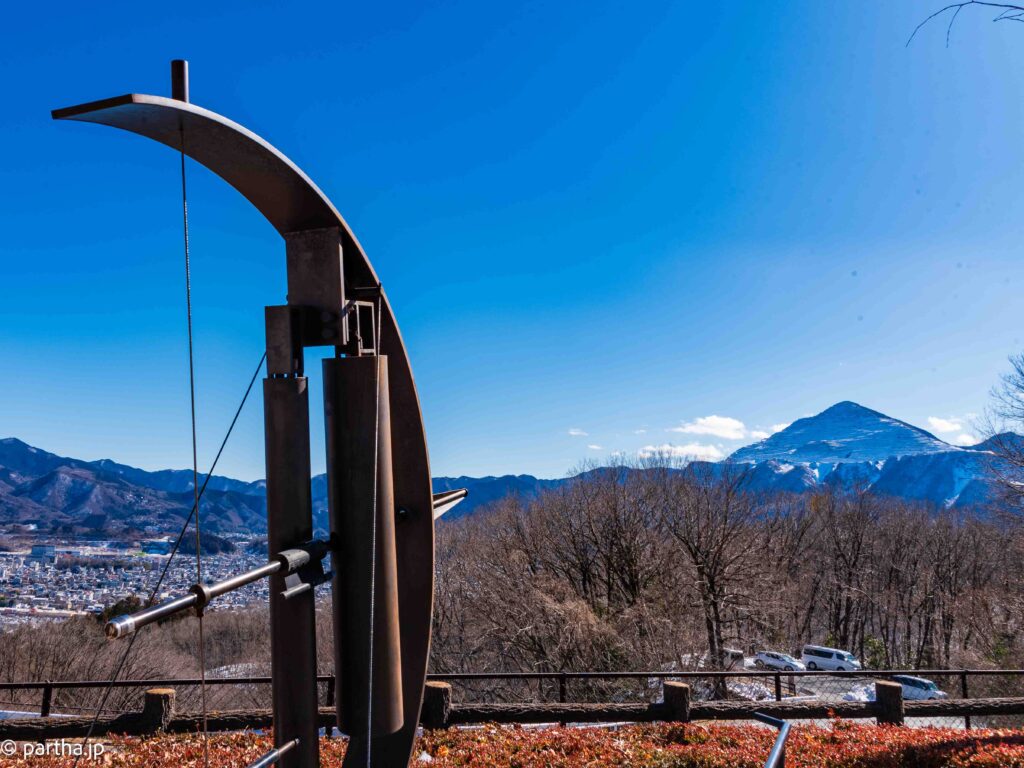
We could finish around 70% of the Naan with effort, the friendly waiter brining us a cup of ‘Chai’ on the house. As we paid for the meal at the counter, the colourfully dressed owner Midori San spoke to us in Hindi.
According to the restaurant website, Midori San’s dresses are trademarked and she wears a range of colourful attires and is well known for her choice of clothing.
Many of our weekend outings have been to Chichibu, an area not as popular as it should be. The Yamanashi and Nagano regions are the favourites weekend getaways of people form Tokyo but Chichibu , a feast of the quaint and the strange deserves much more!
